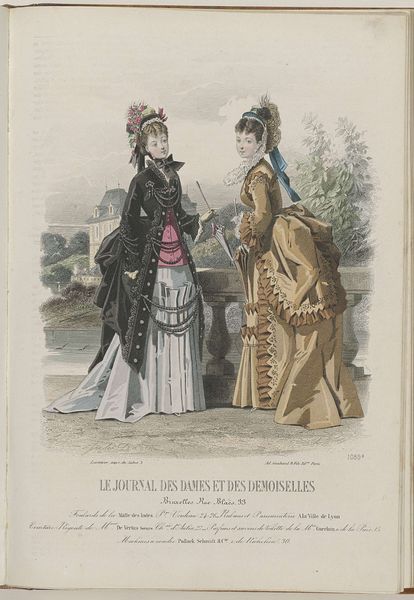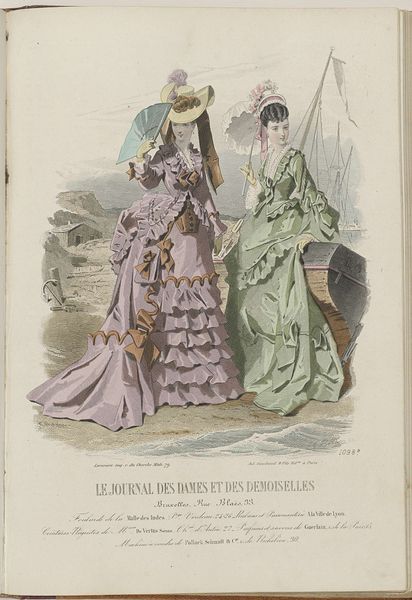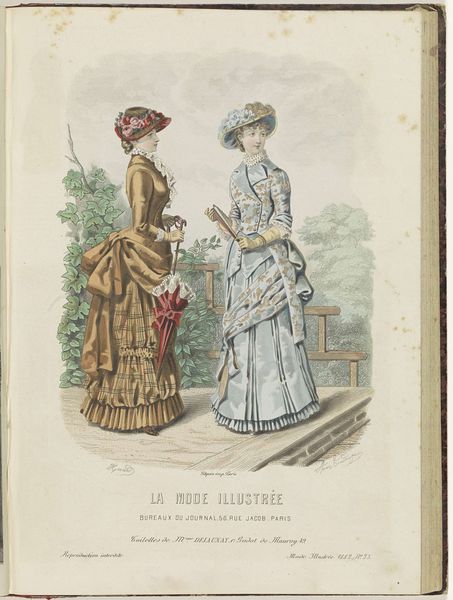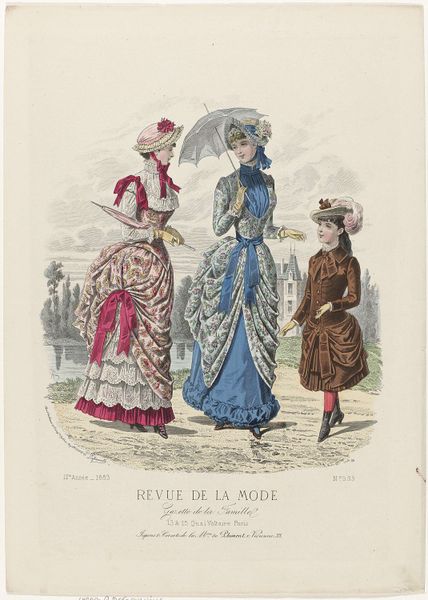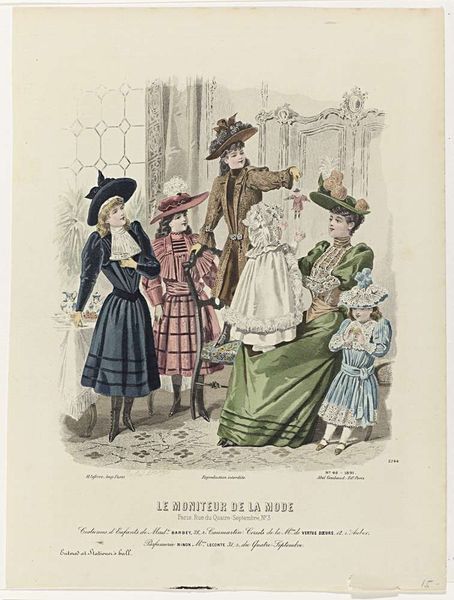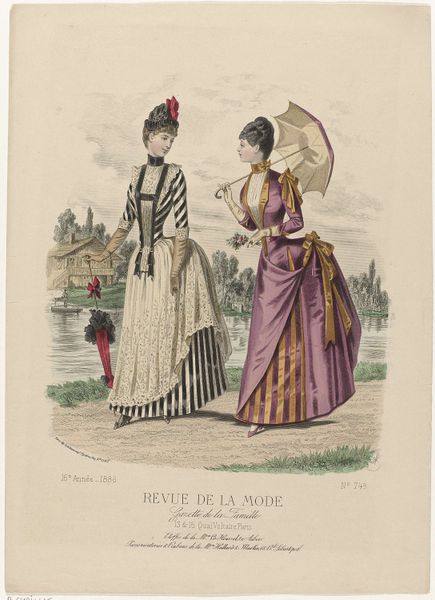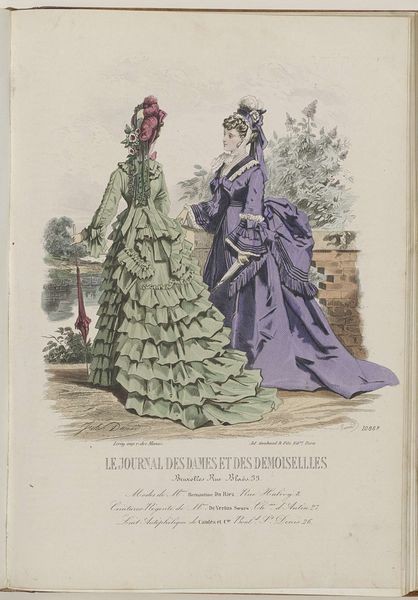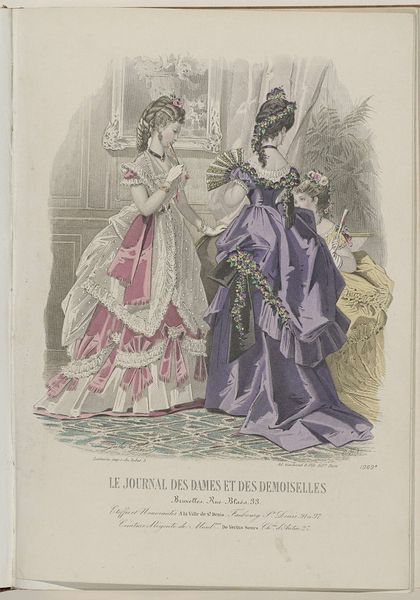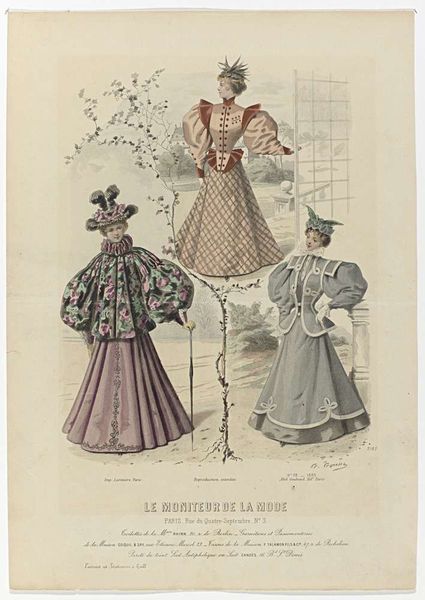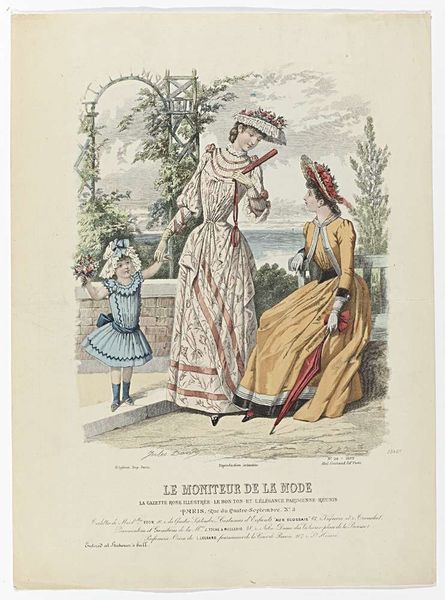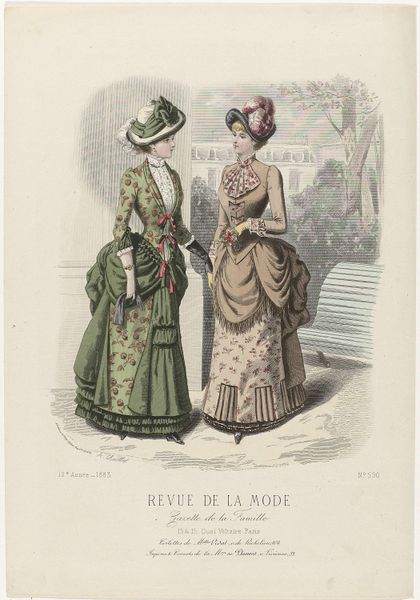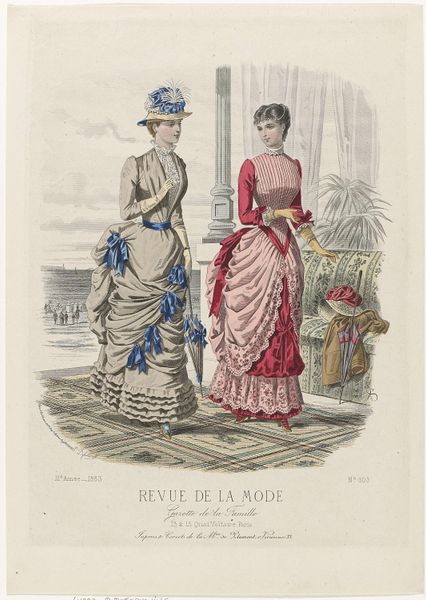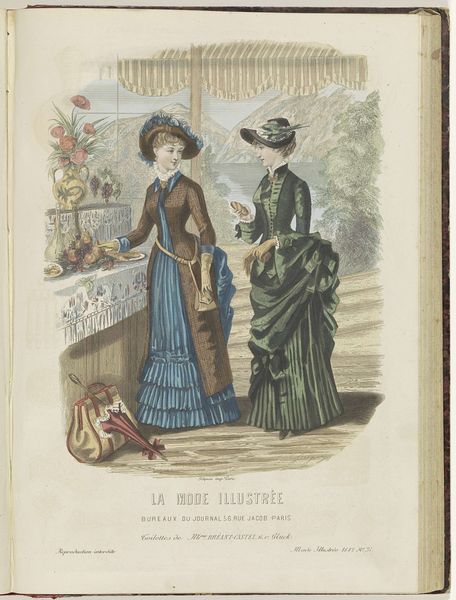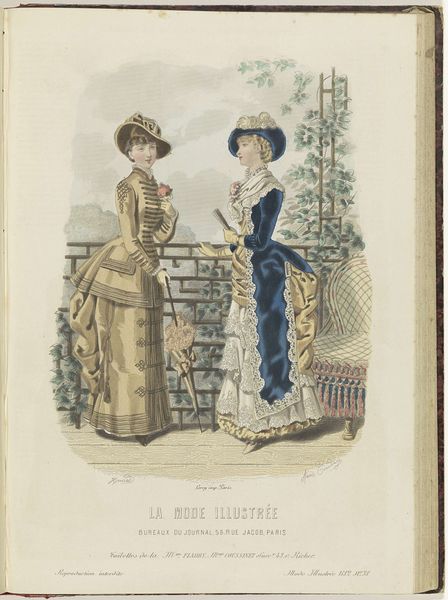
Le Moniteur de la Mode, 1895, Nr. 3159, No. 28: Toilettes de Mad.e Benoit (...) 1895
0:00
0:00
Dimensions: height 399 mm, width 286 mm
Copyright: Rijks Museum: Open Domain
Curator: This is a print from Le Moniteur de la Mode, number 3159, dating to 1895. It showcases two women's fashion designs by Mad.e Benoit. What's your initial take on it? Editor: Those sleeves! They're enormous. It's like two fluffy clouds landed on their shoulders. The lithographic process seems delicate, but the effect is surprisingly substantial. Curator: Indeed, the gigot sleeves are a hallmark of the period, weren’t they? Magazines like Le Moniteur were critical in disseminating these trends and constructing aspirational identities for their readership. They democratized fashion, albeit within the confines of class structures. Editor: I'm curious about the choices made in its production. The material realities—the types of inks, the paper quality, and the lithographer's skill – all contribute to the aesthetic. It's a commercial product intended to shape consumption, but it's also undeniably artful. The textures seem almost palpable; look at the way the fabric drapes. Curator: Absolutely. And it served more than just commercial interests. It shaped cultural norms, and it signaled who was "in" and "out," didn't it? Beyond the artistry, this print actively participates in the construction of an image of femininity, accessible through consumption. It's also interesting how the context of fashion magazines at the end of the century helped form advertising standards of beauty. Editor: Speaking of "in," look at the contrasting textures: lace against solid fabric, those feathered hats against plain backgrounds. It's about creating visual drama, drawing the eye to the details—all meticulously reproduced via printmaking. One wonders about the hands involved in its creation; from the paper manufacturer, the one preparing the lithographic stone, all the way to the ink producer. Curator: Precisely! It's a window into a specific historical moment, not just in fashion but in the culture of print and the burgeoning visual economy. One can argue that fashion is never not political, or separated from a material base. Editor: Agreed, examining its materiality makes us ponder how labor, consumption, and aesthetics entwine. It is more than just frills, is about process. Curator: Thanks for bringing such perspectives! Now our audience can see not just a pretty picture, but also the historical weight it carries. Editor: A great demonstration of how an image can be simultaneously alluring and deeply rooted in material conditions and systems.
Comments
No comments
Be the first to comment and join the conversation on the ultimate creative platform.
